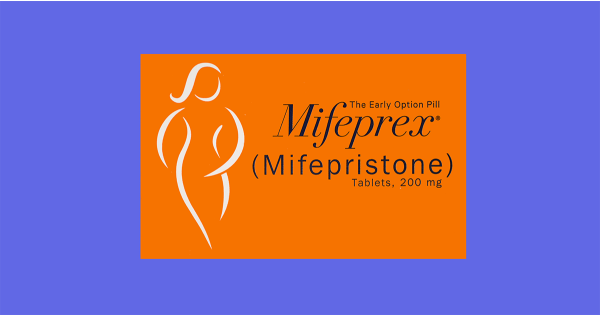Listen to the article
The safety of medication abortion has become a contentious political battlefield, with a recent paper claiming to uncover serious risks associated with mifepristone now facing intense scrutiny from medical experts and fact-checkers.
In late April, newly appointed FDA Commissioner Dr. Marty Makary stated in a PBS interview that he had “no plans to take action on mifepristone,” though he added that new data might prompt the agency to reconsider its position. Just four days after this interview, the Ethics & Public Policy Center, an anti-abortion organization, self-published a paper claiming mifepristone is significantly more dangerous than FDA labeling indicates.
The timing of these events has raised eyebrows among reproductive health advocates, who view it as part of a coordinated effort to restrict access to medication abortion. Major media outlets and medical institutions have since questioned the paper’s validity and methodology.
The controversial paper alleges that one in 10 women experience serious adverse events when using mifepristone for abortion—a figure 22 times higher than established medical consensus. This claim stands in stark contrast to decades of peer-reviewed research from reputable scientists worldwide, which consistently shows serious complications occurring in less than 1 percent of cases.
Medical experts point out that the mifepristone-misoprostol combination has been demonstrated to be highly effective, resulting in completed abortions over 95 percent of the time. Studies have repeatedly found mifepristone to be safer than common medications like penicillin and Viagra, and safer than childbirth itself.
Critics have identified numerous methodological flaws in the paper. The authors fail to disclose specifics about their dataset or the medical diagnosis codes used in their analysis—standard practice in legitimate scientific research that allows for peer verification.
A particularly problematic aspect is how the paper identifies cases through mifepristone prescriptions without adequately distinguishing between induced abortions and other uses of the medication, such as miscarriage management, labor induction, and treatment for Cushing syndrome. This creates significant potential for data contamination.
More than half of the “adverse events” claimed in the paper fall under a vague category called “other abortion-specific complications,” which the authors admit includes codes related to both abortion and miscarriage. This suggests they may have conflated natural miscarriages with medication abortions in their analysis.
Another critical flaw is counting emergency room visits as serious adverse events attributable to mifepristone without establishing causation. Research shows many patients visit emergency rooms after medication abortion simply for confirmation of completion or reassurance about normal bleeding—not because of complications. For many Americans with limited healthcare access, emergency departments serve as primary entry points for various health concerns.
The paper also categorizes subsequent procedural abortions as adverse events, though these are standard follow-up care in approximately 4 percent of medication abortions that don’t complete as expected—not evidence of dangerous complications.
Despite these methodological shortcomings, the authors make sweeping policy recommendations, including that mifepristone should only be administered in clinical settings under physician supervision. These conclusions appear disconnected from their own research, as their data doesn’t address delivery methods (in-person versus telehealth) or provider credentials.
The consequences of such research extend beyond academic debates. U.S. Senators Josh Hawley and Steve Daines have already cited the paper when calling for FDA restrictions on mifepristone. Health and Human Services Secretary Robert F. Kennedy Jr. referenced it during congressional testimony, suggesting the FDA should reevaluate the medication.
If such efforts succeed, hundreds of thousands of Americans—even in states where abortion remains legal—could lose access to a medication that extensive research has proven safe and effective.
Reproductive health advocates emphasize the importance of countering these claims with scientific evidence each time they emerge, preventing misinformation from influencing healthcare policy and restricting access to essential reproductive care.
Verify This Yourself
Use these professional tools to fact-check and investigate claims independently
Reverse Image Search
Check if this image has been used elsewhere or in different contexts
Ask Our AI About This Claim
Get instant answers with web-powered AI analysis
Related Fact-Checks
See what other fact-checkers have said about similar claims
Want More Verification Tools?
Access our full suite of professional disinformation monitoring and investigation tools




8 Comments
This is a complex and sensitive issue that deserves careful, fact-based examination. I hope the ongoing scrutiny and debate can shed light on the true safety and efficacy of this medication, without being unduly influenced by political agendas.
Agreed, the potential risks and benefits need to be weighed objectively, based on sound scientific evidence rather than ideological positions.
This debate highlights the importance of maintaining an impartial, evidence-based approach to regulating pharmaceutical products, even when the issues are highly charged politically. I’ll be interested to see how the FDA and other authorities handle this situation.
Agreed, the credibility and independence of regulatory bodies like the FDA will be crucial in ensuring the public can trust the outcome of this process.
As an investor in the mining and energy sectors, I’m curious to see if this issue has any indirect effects on commodity markets, particularly if it impacts the availability or pricing of medications used in mining, manufacturing, or energy production.
As someone with an interest in the mining and commodities sector, I’ll be following this story closely, as access to safe and reliable abortion medication could have broader implications for the healthcare and pharmaceutical industries.
Good point. Developments around mifepristone could indirectly impact the availability and pricing of other critical medications, which is an important consideration.
While I’m not an expert on this topic, it’s concerning to see such a stark discrepancy between the paper’s claims and the established medical consensus. I hope the ongoing scrutiny helps resolve these conflicting data points.